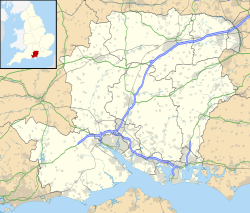Cowes Castle
| Cowes Castle | |
|---|---|
| Isle of Wight, England | |
 |
|
| Coordinates | 50°46′00″N 1°18′04″W / 50.76653°N 1.30111°W |
| Type | Device Fort |
| Site information | |
| Owner | Royal Yacht Squadron |
| Open to the public |
No |
| Site history | |
| Built | 1539 |
| Events | English Civil War |
Cowes Castle, also known as West Cowes Castle, is a Device Fort in Cowes on the Isle of Wight. Originally built by Henry VIII in 1539 to protect England against the threat of invasion from France and the Holy Roman Empire, it comprised a circular bastion, flanking wings and a keep, and in 1547 it housed 17 pieces of artillery. With its companion fortification at East Cowes, the castle overlooked the entrance to the River Medina, an important anchorage. The invasion threat passed but the fortification continued in use until the middle of the 19th century, very briefly seeing action in 1642 during the English Civil War.
Decommissioned in 1854, the castle was first leased, and later bought outright, by the Royal Yacht Squadron to form their new clubhouse. The Squadron then employed the architect Anthony Salvin to rebuild large parts of it between 1856 and 1858. It became the headquarters for part of the D-Day invasion force during the Second World War, but has otherwise remained in use by the Squadron and is a distinctive landmark in yacht races along the Isle of Wight.
Cowes Castle was built as a consequence of international tensions between England, France and the Holy Roman Empire in the final years of the reign of King Henry VIII. Traditionally the Crown had left coastal defences to the local lords and communities, only taking a modest role in building and maintaining fortifications, and while France and the Empire remained in conflict with one another, maritime raids were common but an actual invasion of England seemed unlikely. Modest defences, based around simple blockhouses and towers, existed in the south-west and along the Sussex coast, augmented by a few more impressive works in the north of England, but in general the fortifications were very limited in scale.
...
Wikipedia

